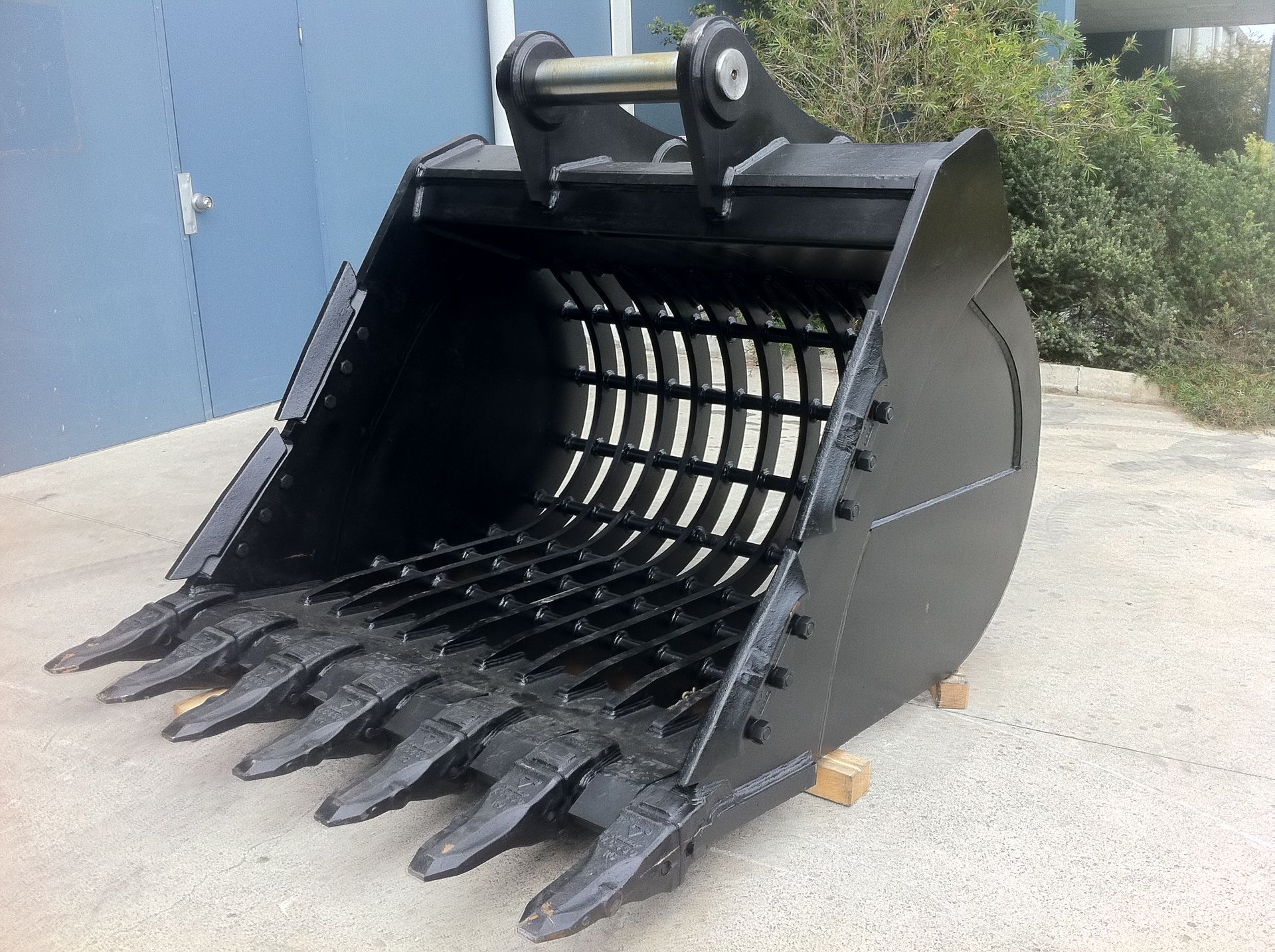Excavators are versatile machines used in various construction and excavation projects. Excavators can come with a variety of different attachments, with the most basic of those being excavator buckets.
Understanding the different excavator bucket types, their applications, and the various teeth types can significantly enhance productivity and project efficiency. This guide covers different types of excavator buckets and their teeth.
What is an Excavator Bucket?
Excavator buckets come in various shapes and sizes, each designed for specific tasks and conditions. Choosing the right bucket can greatly impact the performance and efficiency of your excavator and the task at hand.
Types of Buckets
1. Standard Digging Buckets
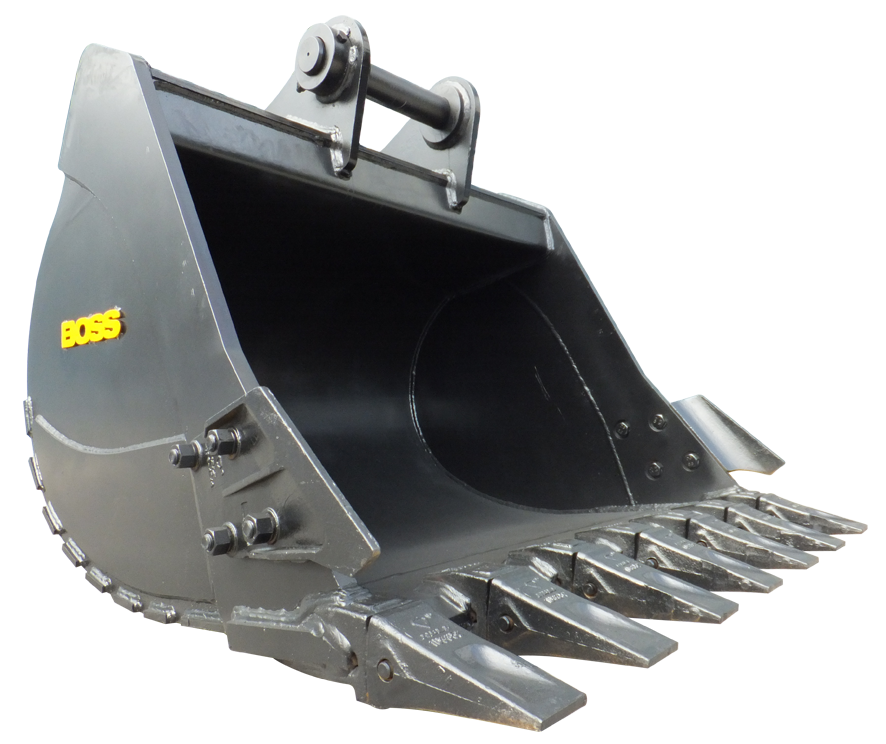
Standard digging buckets are the most common type of excavator buckets and made for everyday use. The excavation industry commonly refers to them as "GP" buckets. These buckets feature a robust design with reinforced edges to withstand harsh conditions.
Applications:
- General excavation
- Trenching
- Soil and sand digging
2. Heavy-Duty Buckets
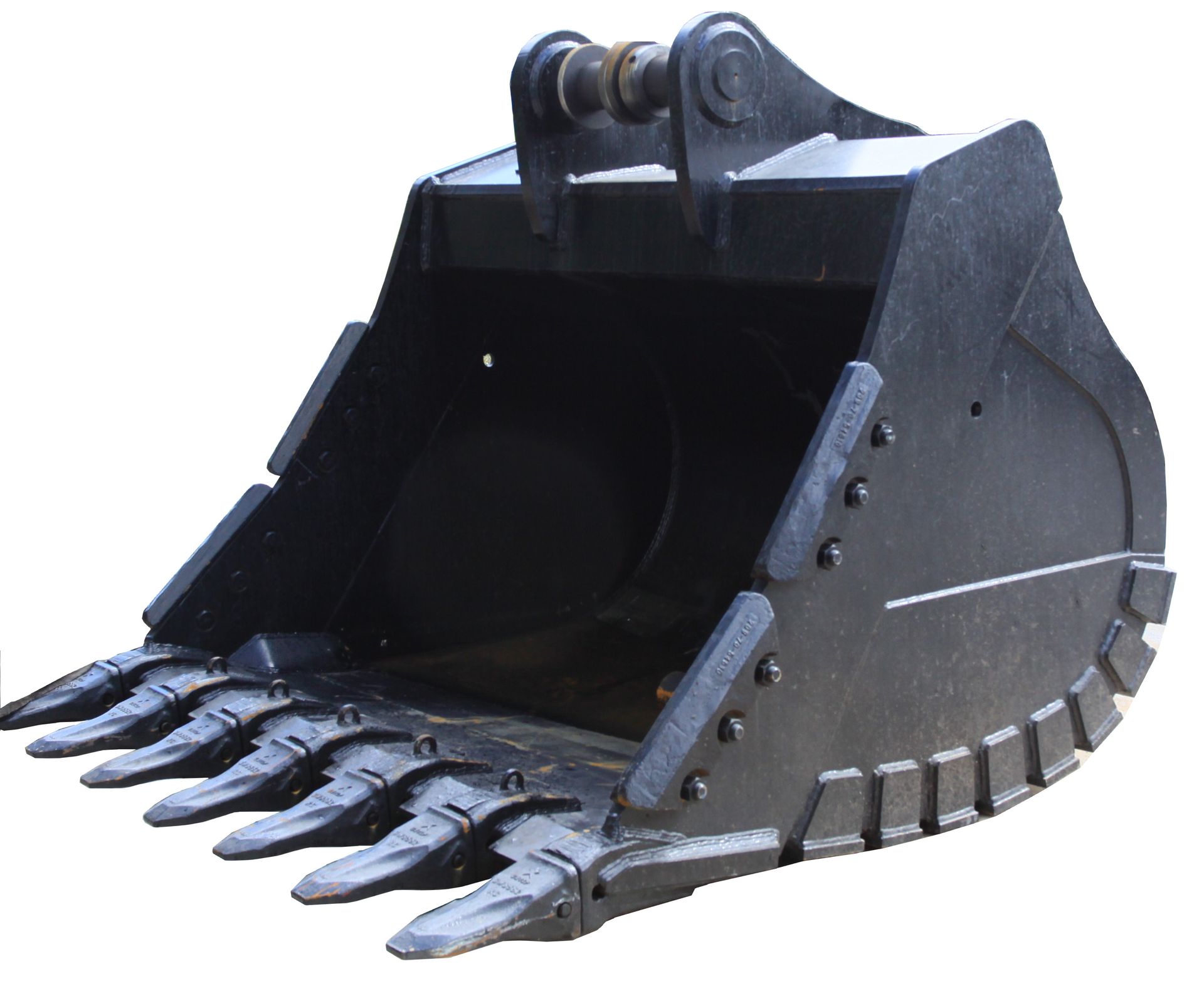
Heavy-duty buckets have extra reinforcement to with stand demanding jobs. They have thicker walls and a more reinforced structure than standard buckets, making them suitable for handling abrasive materials.
Applications:
- Rock excavation
- Demolition
- Heavy material handling
3. Trenching Buckets
Trenching buckets, also known as trenching attachments, are narrower than standard buckets.
Applications:
- Utility trenching
- Narrow excavation
- Cable and pipeline installation
4. Grading Buckets
Grading buckets, or ditching buckets, have a wide, flat shape ideal for grading, leveling, and finishing work. They typically have a smooth edge to create a clean finish.
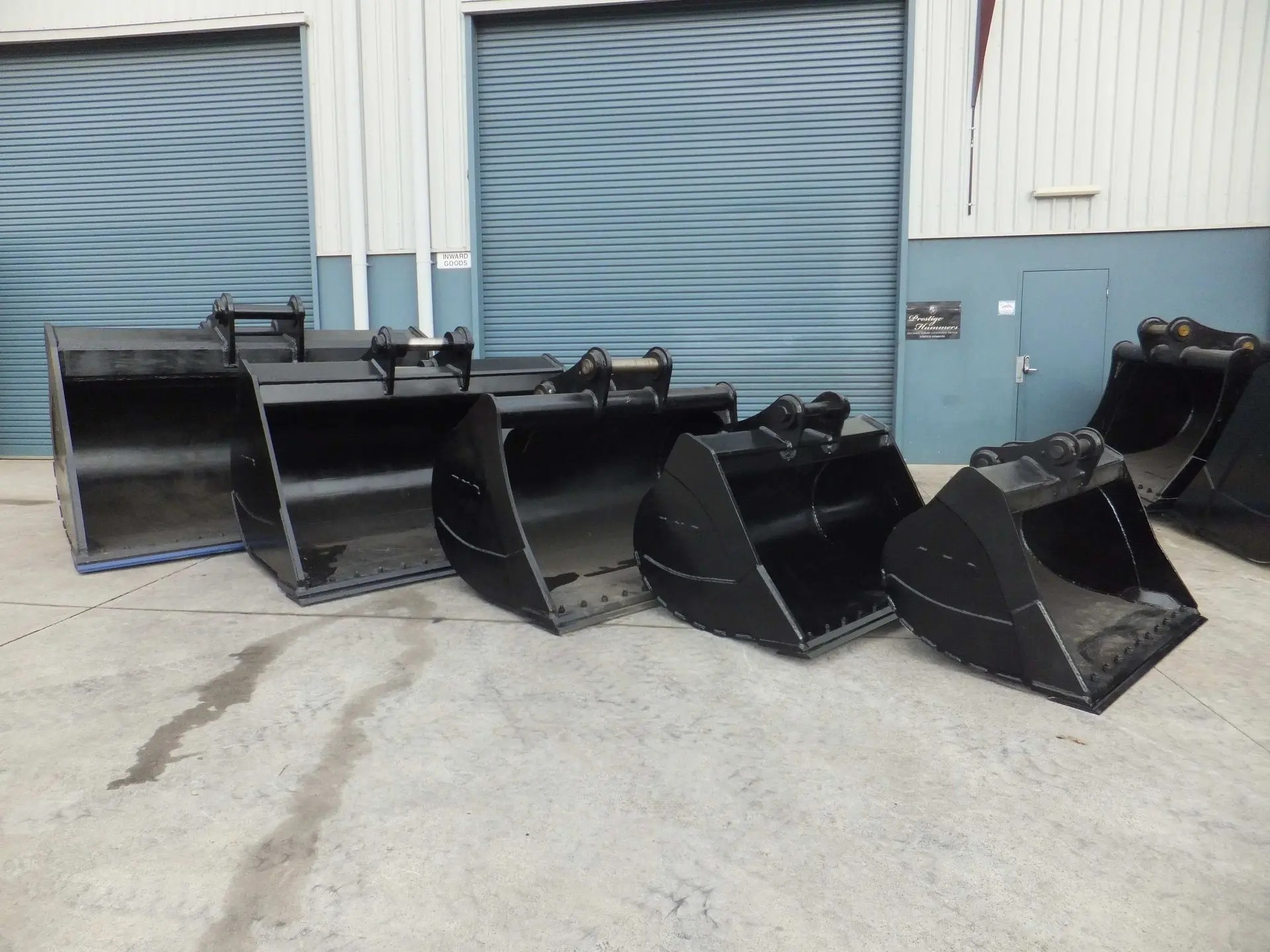
Applications:
- Grading
- Landscaping
- Slope finishing
5. Skeleton Buckets
Skeleton buckets are designed to separate larger materials from finer materials. Skeleton buckets (also known as shaker buckets or sifting buckets) have a grid design to assist sorting materials.
Applications:
- Sorting and sifting
- Recycling
- Rock and debris separation
6. Tilting Buckets
Tilting buckets can be angled or tilted to either side, providing greater flexibility and control. This makes them ideal for precise grading and contouring tasks.
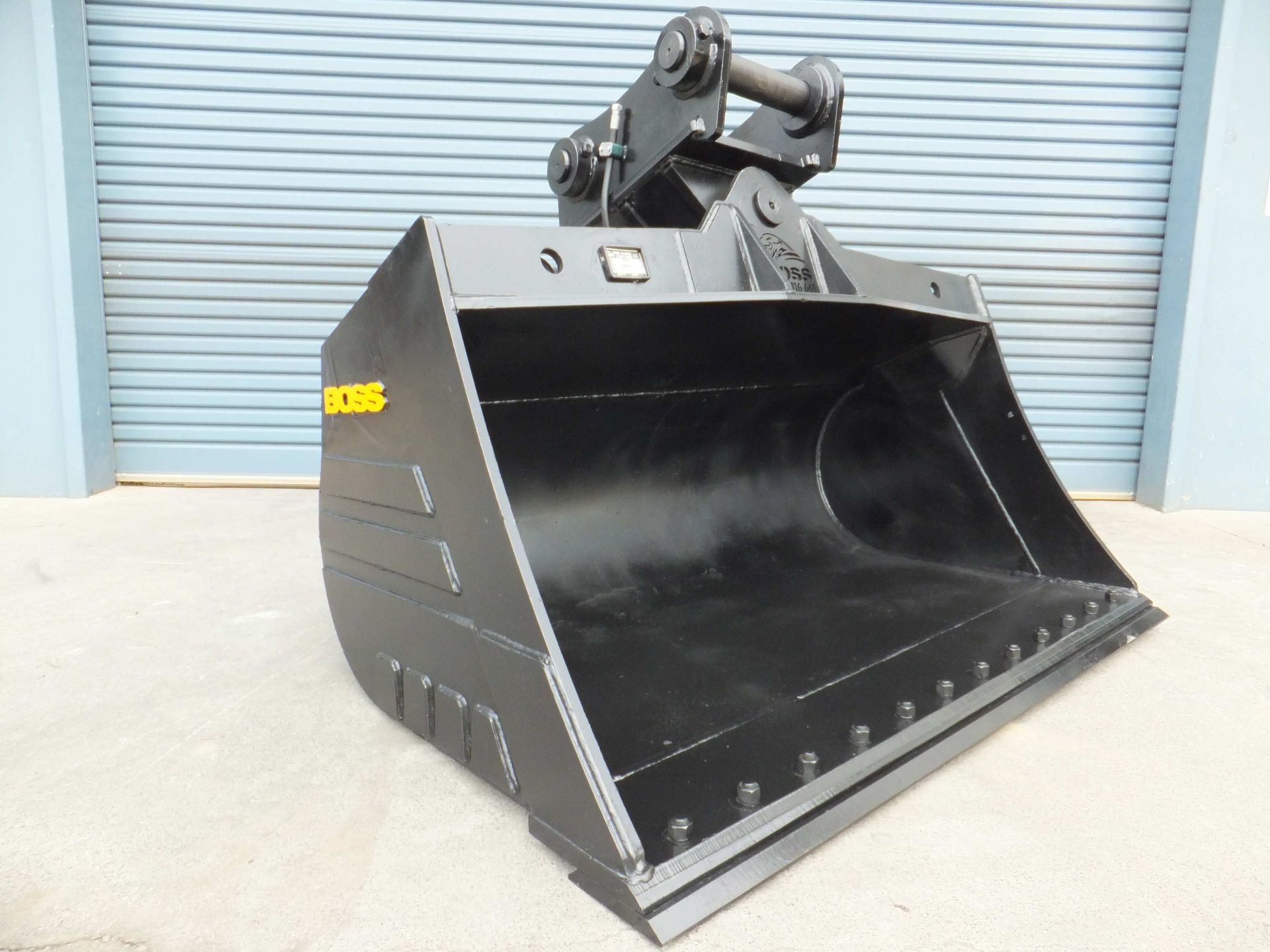
Applications:
- Precise grading
- Landscaping
- Slope shaping
Types of Excavator Bucket Teeth
The type of teeth on an excavator bucket significantly affects its performance. Different teeth designs are suitable for various materials and tasks.
1. Standard Teeth
Standard teeth are versatile and suitable for general-purpose digging. They have a basic, pointed design that provides good penetration in most materials.
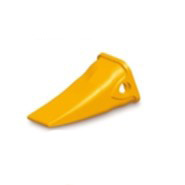
Applications:
- General excavation
- Soil and clay digging
- Light rock work
2. Rock Teeth
Rock teeth are designed with a more robust and reinforced structure to handle abrasive and rocky materials. They typically have a long sharp teeth for better penetration in hard materials.
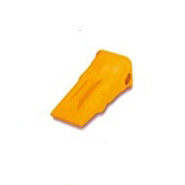
Applications:
- Rock excavation
- Quarry work
- Demolition
3. Tiger Teeth
Tiger teeth have a sharp, aggressive design with multiple points. They provide excellent penetration and are ideal for tough digging conditions.
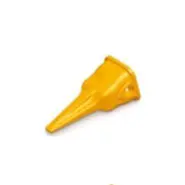
Applications:
- Hard-packed soil
- Rocky ground
- Frozen ground
4. Twin Tiger Teeth
Twin tiger teeth feature two points for each tooth, providing enhanced penetration and gripping ability. They are suitable for very tough and compact materials.
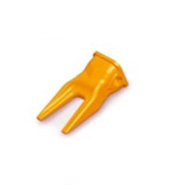
Applications:
- Extremely hard ground
- Frozen soil
- Dense clay
5. Flare Teeth
Flare teeth have a wider, flared design that increases the surface area for digging and scooping. They are ideal for handling loose materials and creating smooth trench walls.
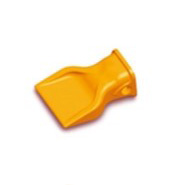
Applications:
- Trenching
- Loose soil and sand
- Light grading
Choosing the Right Excavator Bucket
Selecting the right excavator bucket involves considering several factors, including the type of material, the specific task, and the machine's capabilities. Here are some tips to help you choose the right bucket:
Bucket Widths
Excavator buckets are available in a range of widths to accommodate different tasks and excavator sizes. For instance, a general digging bucket designed for a 20-tonne excavator can come in widths of 300mm, 450mm, 600mm, 750mm, 900mm, 1000mm, 1200mm, and 1500mm.
Each width serves specific purposes, with narrower buckets being ideal for trenching and precise digging, while wider buckets are suitable for bulk material handling and larger excavation projects. Selecting the correct type and width of the bucket is crucial to ensure optimal performance and efficiency. Considering the task at hand and the material to be handled will help in choosing the right bucket, thereby enhancing the excavator's productivity and effectiveness.
Material Type
- Soft soil: Standard teeth and standard buckets are usually sufficient.
- Rocky or abrasive material: Heavy-duty buckets with rock teeth are ideal.
- Loose materials: Skeleton or flare teeth buckets work best.
Task Requirements
- General digging: Standard digging buckets with standard teeth.
- Precise grading: Tilting or grading buckets.
- Trenching: Trenching buckets with flare teeth.
Hitch Compatibility
Pin sizes are a critical aspect of selecting the right excavator bucket and attachment. Each excavator is equipped with a hitch, either a standard or a quick coupler, designed to match specific "pick-up measurements." These measurements include the pin diameter, the distance between the pin centers, and the length of the pins, also known as ears.
For example, a 20-tonne excavator typically requires a hitch compatible with 80mm pins. Additionally, the distance between the centers of these pins and the length of the pins must match the specific measurements of the hitch. If these dimensions don't align, you won't be able to use the bucket on your excavator.
It is essential to know the exact pick-up measurements your excavator can handle. This information ensures that the bucket or attachment you select will fit securely and operate efficiently. Always refer to your machine manual or consult with the manufacturer to confirm the correct pin sizes and pick-up measurements for your excavator. Properly matching these dimensions is crucial for safe and effective operation.
Beware of Cheap Excavator Buckets
When selecting an excavator bucket, it's essential to be cautious of cheap options that often use poor-quality materials. While cheaper buckets may appeal, they often result in frequent replacements and equipment damage.
Importance of High-Quality Materials
High-quality excavator buckets are typically made from durable materials like Hardox steel. Hardox is renowned for its exceptional hardness and toughness, making it ideal for heavy-duty applications. Buckets made from Hardox can withstand the rigors of daily use, handling abrasive materials, and performing under extreme conditions without compromising their integrity.
Custom Manufacturing for a Perfect Fit
In addition to selecting high-quality materials, it’s crucial to choose buckets that are custom-manufactured to suit your specific excavator. Custom buckets ensure a perfect fit and reducing wear and tear on both the bucket and the excavator. When buckets fit correctly, they distribute stress evenly, minimizing the risk of breakage and prolonging the bucket's lifespan.
The Value of Investing in Quality
Excavator buckets are everyday use items, constantly subjected to intense work environments. Investing in quality buckets may have a higher upfront cost, but it pays off in the long run. Quality buckets last longer, reducing the need for frequent replacements and the associated downtime and costs. Additionally, they perform better, increasing productivity and ensuring your projects run smoothly.
Identifying Quality Excavator Buckets
To ensure you’re purchasing a quality excavator bucket, look for the following:
- Material: Check that the bucket is made from Hardox.
- Manufacturing: Verify that the bucket is custom-manufactured to match your excavator’s specifications.
- Reputation: Buy from reputable manufacturers, like Boss Attachments, known for their quality and durability.
- Warranty: Look for products that come with a warranty, as this indicates the manufacturer’s confidence in their product.
Conclusion
Understanding the various types of excavator buckets and bucket teeth can greatly enhance your project's efficiency and productivity. By choosing the right bucket for the job, you can ensure optimal performance and minimise wear and tear on your equipment. Whether you need a standard digging bucket for general use or a specialized bucket for a specific task, selecting the appropriate attachment is key to achieving the best results in your excavation projects.
